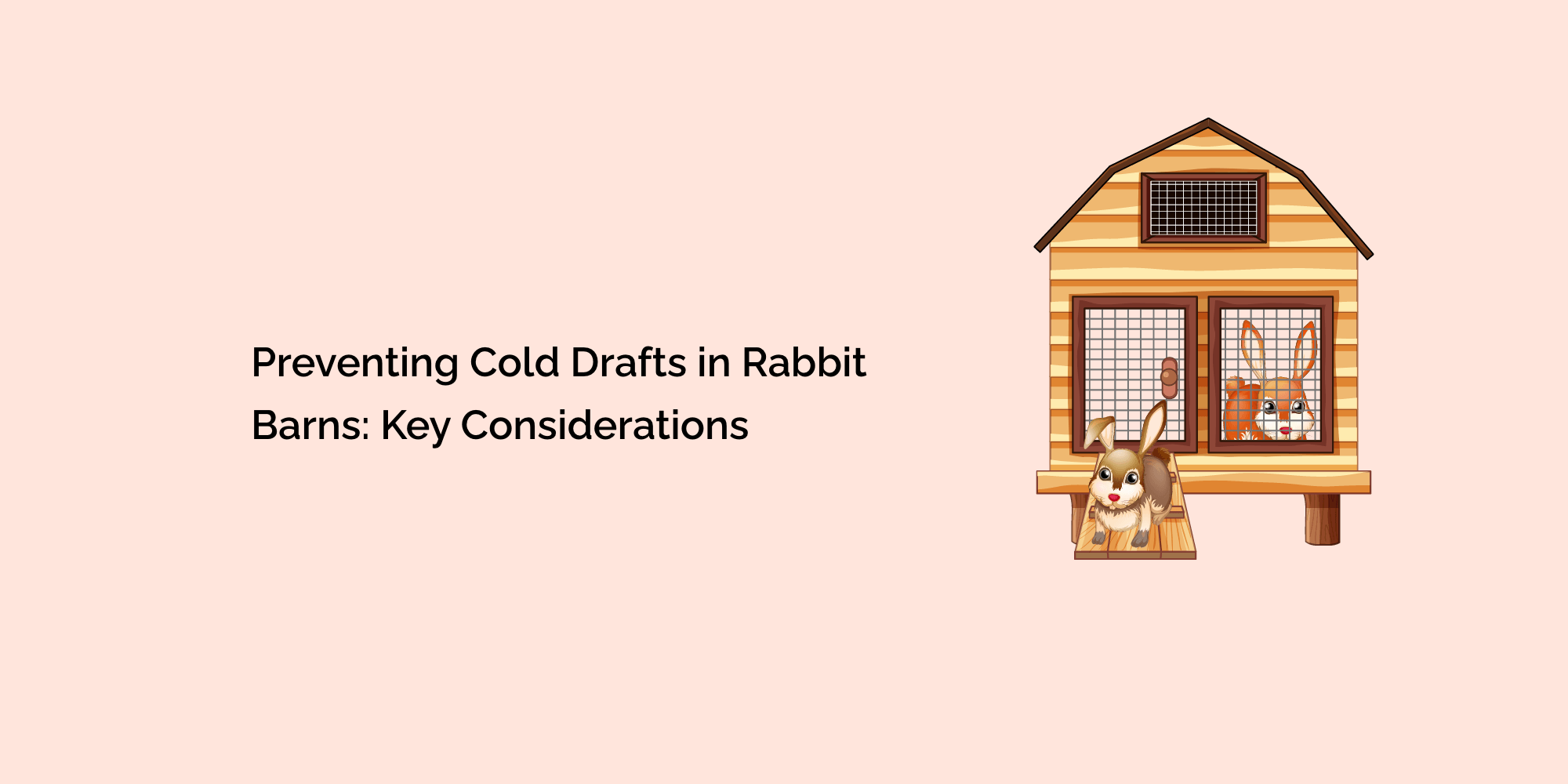Providing a warm and comfortable environment is essential for the health and well-being of rabbits raised in barn settings. Cold drafts can significantly impact rabbits' health, leading to stress, respiratory issues, and reduced productivity. As responsible rabbit caretakers, it is crucial to implement effective strategies to prevent cold drafts in the barn. \
In this comprehensive blog, we will explore key considerations and practical solutions to create a draft-free and cozy environment that promotes the optimal growth and development of rabbits.
Understanding the Impact of Cold Drafts on Rabbits
The Vulnerability of Rabbits to Cold Drafts
Rabbits are particularly susceptible to cold temperatures and drafts due to their small size and relatively thin fur. Understanding how drafts affect rabbits is crucial for devising effective prevention strategies.
Health Risks of Cold Drafts
Exposure to cold drafts can lead to hypothermia, respiratory problems, and weakened immune systems in rabbits. This section will detail the potential health risks of cold drafts on rabbits' well-being.
Identifying Cold Draft Sources in Rabbit Barns
Barn Structure Assessment
Conducting a thorough assessment of the barn's structure is the first step in identifying potential cold draft sources. This section will guide readers on how to inspect for gaps, cracks, and other openings that may allow cold air to infiltrate the barn.
Air Leakage Points
Identifying common air leakage points, such as doors, windows, ventilation systems, and roofing, will help pinpoint areas that require attention for draft prevention.
Effective Barn Insulation Techniques
Wall Insulation
Proper wall insulation is crucial for maintaining a consistent indoor temperature and reducing the risk of cold drafts. This section will explore various insulation materials and techniques suitable for rabbit barns.
Roof Insulation
Heat rises, making the roof a critical area for insulation. We will discuss the importance of insulated roofing and different materials that can be used for this purpose.
Flooring Insulation
Cold flooring can contribute to discomfort for rabbits. This section will cover flooring insulation options to ensure the rabbits' paws are protected from the chill.
Sealing Draft Points and Proper Ventilation
Sealing Doors and Windows
Properly sealing doors and windows is essential to prevent cold drafts from entering the barn. We will provide step-by-step guidance on how to effectively seal these openings.
Insulated Curtains or Screens
Installing insulated curtains or screens can help regulate air flow while blocking cold drafts from reaching the rabbits.
Balancing Ventilation and Draft
Prevention Maintaining proper ventilation is crucial to avoid condensation and stagnant air in the barn. This section will offer insights into balancing ventilation needs with draft prevention efforts.
Heating Solutions for Draft Prevention
Radiant Heating
Radiant heating systems can provide a consistent and efficient source of warmth for rabbits without causing drafts.
Heated Nesting Areas
Creating heated nesting areas can provide additional comfort for rabbits during cold weather, reducing their exposure to drafts.
Space Heaters and Heat Lamps
Proper placement of space heaters and heat lamps can effectively warm specific areas of the barn without causing disruptive drafts.
Monitoring and Maintenance
Regular Temperature Checks
Consistently monitoring the barn's temperature is essential to ensure that it remains within the optimal range and to detect any sudden changes that may indicate drafts.
Regular Maintenance of Insulation and Sealing
Regularly inspecting and maintaining insulation materials and sealing points will ensure their continued effectiveness in preventing cold drafts.
Best Practices and Case Studies
This section will summarize the best practices for preventing cold drafts in rabbit barns and provide real-life case studies that showcase successful implementations of draft prevention strategies.
Conclusion
In conclusion, preventing cold drafts in rabbit barns is essential for maintaining the rabbits' health and well-being. By understanding the impact of drafts, identifying potential cold air sources, implementing effective insulation and sealing techniques, and providing appropriate heating solutions, rabbit caretakers can create a draft-free and cozy environment for their livestock.
Consistent monitoring and regular maintenance are critical for sustaining a comfortable environment that fosters optimal growth and productivity. With these key considerations and practical solutions in mind, rabbit farmers can ensure their animals are protected from the adverse effects of cold drafts, resulting in healthier, happier, and more thriving rabbits.








